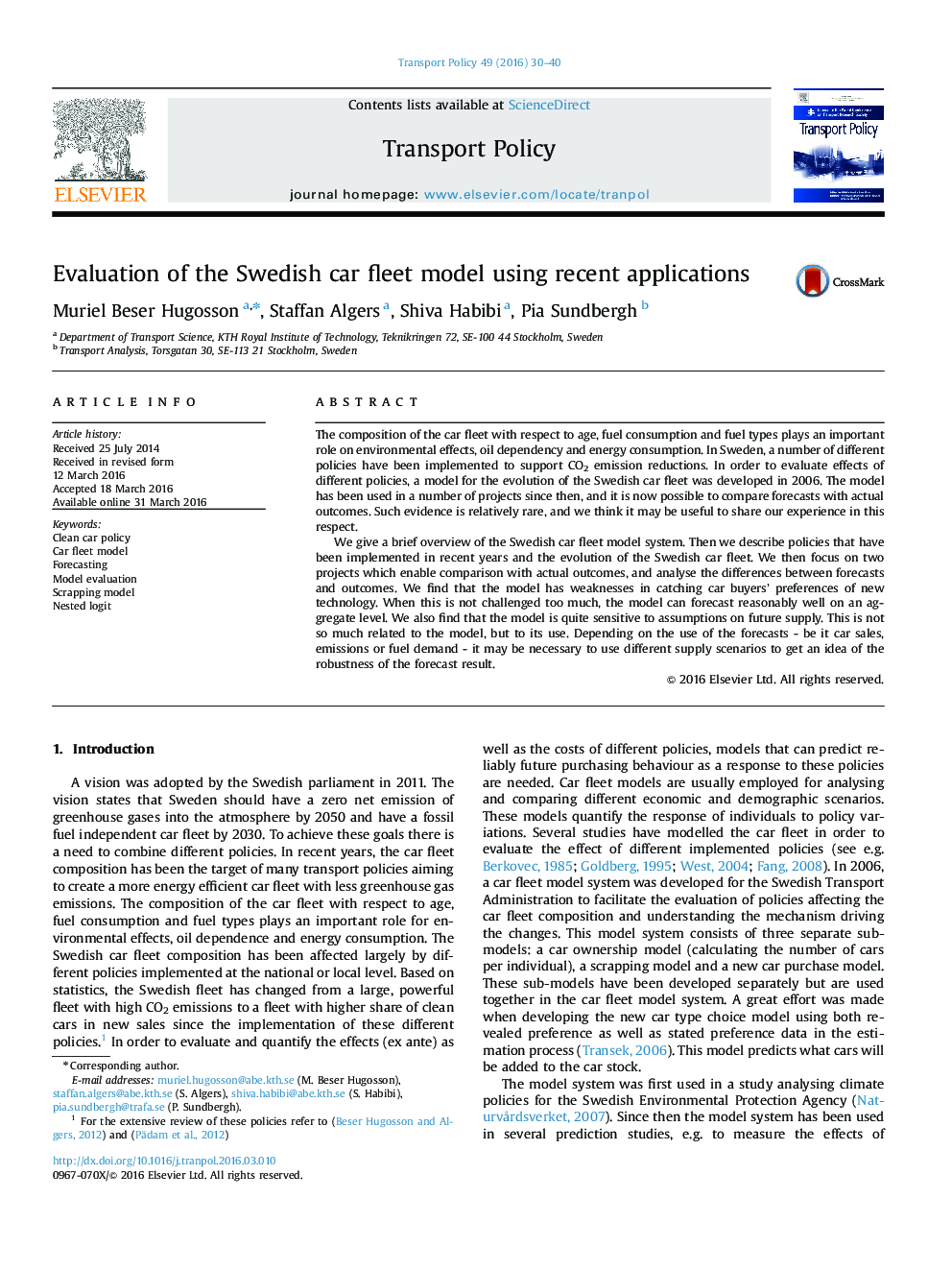| کد مقاله | کد نشریه | سال انتشار | مقاله انگلیسی | نسخه تمام متن |
|---|---|---|---|---|
| 1064770 | 1485828 | 2016 | 11 صفحه PDF | دانلود رایگان |
• Car fleet model system consists of three sub-models – car ownership, scrapping and new car choice models.
• Different car fleet policy measures are evaluated
• Evaluation of a model for predictions of the car fleet composition by comparing forecasts and actual outcomes.
• Realization of the supply assumption (supply of new car types) is essential.
• Short run predictions are difficult due to the uncertainty of introduction of new technology on the market.
The composition of the car fleet with respect to age, fuel consumption and fuel types plays an important role on environmental effects, oil dependency and energy consumption. In Sweden, a number of different policies have been implemented to support CO2 emission reductions. In order to evaluate effects of different policies, a model for the evolution of the Swedish car fleet was developed in 2006. The model has been used in a number of projects since then, and it is now possible to compare forecasts with actual outcomes. Such evidence is relatively rare, and we think it may be useful to share our experience in this respect.We give a brief overview of the Swedish car fleet model system. Then we describe policies that have been implemented in recent years and the evolution of the Swedish car fleet. We then focus on two projects which enable comparison with actual outcomes, and analyse the differences between forecasts and outcomes. We find that the model has weaknesses in catching car buyers' preferences of new technology. When this is not challenged too much, the model can forecast reasonably well on an aggregate level. We also find that the model is quite sensitive to assumptions on future supply. This is not so much related to the model, but to its use. Depending on the use of the forecasts - be it car sales, emissions or fuel demand - it may be necessary to use different supply scenarios to get an idea of the robustness of the forecast result.
Journal: Transport Policy - Volume 49, July 2016, Pages 30–40
